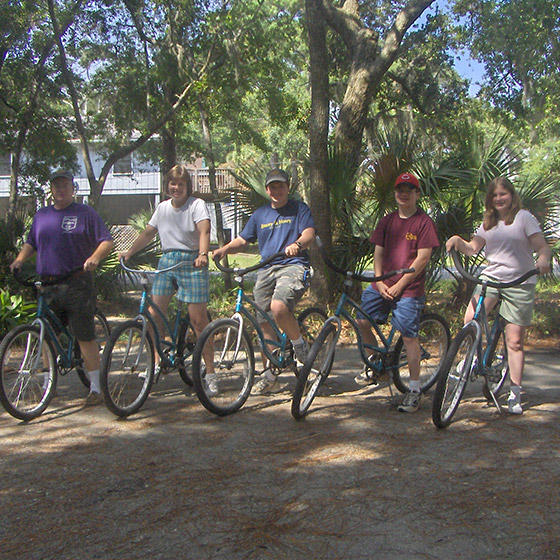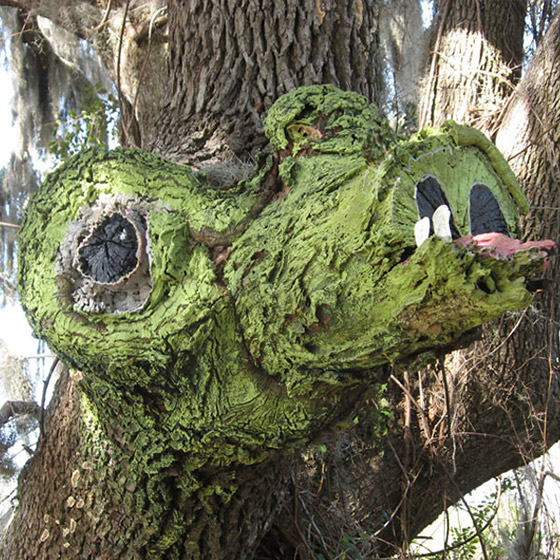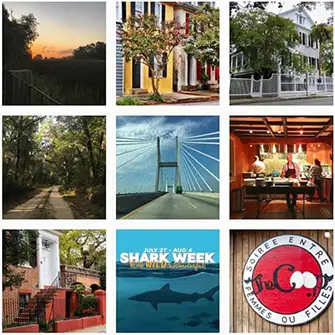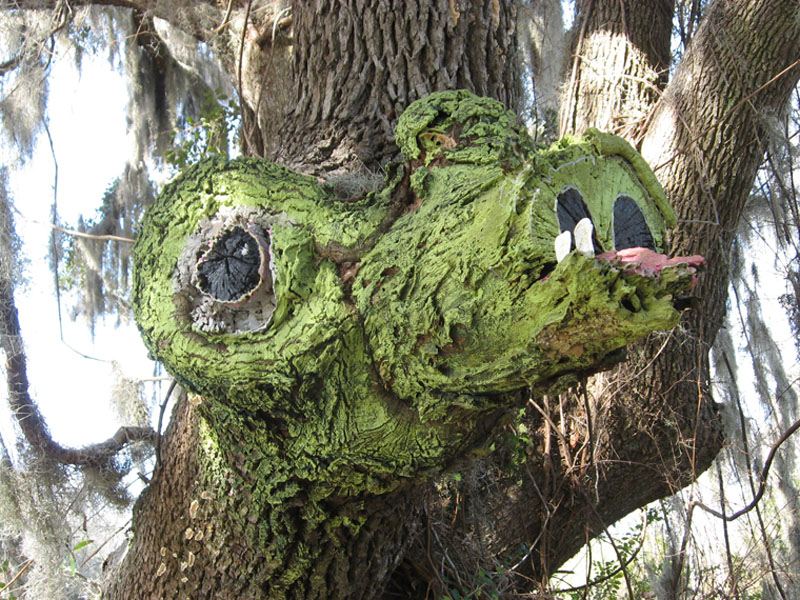
Edisto
Like any good Ohioans, my family trekked off to the beach every summer. As experts of I-75, my parents had a special knack for finding pit stops that would not only entertain their children, but also enrich their minds. They had a good rate going too - about two thirds of their children enjoyed the excursions (which were exclusively Civil War battlefields). The other third, me, could not have cared less. Easily car sick and easily bored, I would walk around the mosquito-infested fields with a frown on my face, sipping on a warm box of apple juice as the sun beat down on my sour little body in khaki shorts.
By the time we arrived at the beach, I would practically fling myself out of the minivan, kissing the ground and yelling out my praises.
“Thank you, thank you for not being an endless field of grass,” I murmured into the gravel driveway.
“Elaine, get up, you’re going to get bitten by a crab,” my dad said, throwing my suitcase next me.
“Crabs don’t bite, they claw and maim,” I said. My father shook his head and moved to unpack the car-top carrier. When he wasn’t looking, I spit out the soil.
And it went on like this for years. By the time I was fourteen, my parents were exploring any other beach we had not gone to, having hit up practically the entire east coast. I’m not sure what guided my parents to Edisto - perhaps there was a battlefield we had somehow missed over the past ten years - but it soon became our beach destination that summer.
After a painful five hundred miles of history and fast food, we finally drove onto Edisto Island. I wasn’t sure we were even in America anymore. Unlike all the other beaches I had been to in my life, there were no neon signs or sky scrapers. Instead, marsh lands and rich greens lined the road.
“Are we lost?” I asked hesitantly, seeing a congregation of alligators huddled in the marsh water.
“Edisto is very nature-heavy, it says so in the guidebook,” my mom said.
The island was beautiful, but the only thing I could think of was that when my mother said nature, really she meant overabundance of mosquitoes.
When we rolled into the driveway of our beach rental home, we stared in awe at the canopy of Spanish moss. That’s another thing Ohioans can’t get enough of--Spanish moss. They like to pluck it from the trees, rub it on their faces thinking it’s nature’s quilt, then take it home to their friends and show it off.
“Yes,” they say, “and this is moss, yes Spanish moss hailing from a little town in South Carolina. Yes, I thought it would make an excellent coffee table display.”
Of course, few Ohioans know what chiggers are. Even I’ll admit, I still don’t quite understand what they are. But they love the moss. And if you rub your face in the moss, they will get on to you. And do horrible things. I’m not sure what these things are (I’m still new to this state, after all), but I imagine it must be like getting attacked by a cobra or having to read your middle school diary out loud.
Naturally, the first thing we all did was pick up the moss and fondle it. As far as I know, we were not attacked by chiggers or any other mystical bug, but who knows - we were probably infested with some other horrible microorganism at that point.
I was almost offended by how picturesque our setting was. The entire street looked like a scene from Gone With the Wind. A couple rang their bells as they biked passed us. A woman in white sandals walking her poodle waved as she went on her way. The dark green palm trees shaded the house, and as I walked up the steps I couldn’t help but feel like songbirds would float down to help us start unpacking.
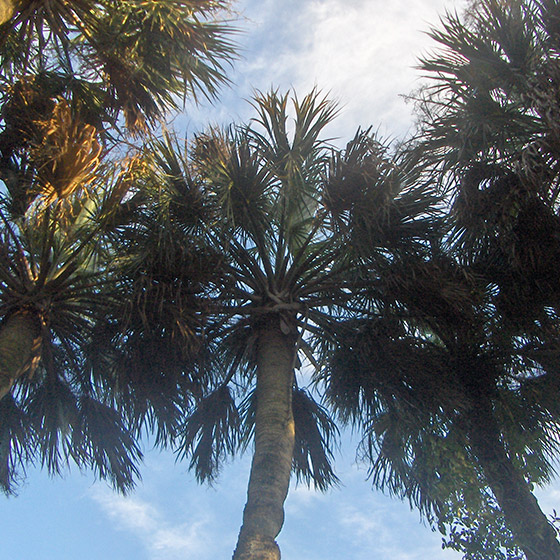
The first item on our agenda was to rent bikes. Apparently, it was the thing to do and I wasn’t sure how that would work. All the other beaches I had been to were car heavy, and I didn’t quite feel like dying after having spent twelve hours in a car with my family.
The first ride my family took was questionable. My father had quickly gone over bike hand signals, which my mother disputed before showing him the correct way to do it. A scuffle ensued, and we pedaled off before it was confirmed how we were supposed to let someone behind us know we were stopping. I focused too much on the hand signals and almost fell off my bike into a pond. My brothers enjoyed brake checking me because apparently being miserable at battlefields wasn’t enough for them.
I calmed down after a while (again, probably the enticing powers of the Spanish moss), and started to enjoy our ride around the island. We went over bridges and explored the “jungle” of Edisto. For a while there, I didn’t feel like an angsty teenager, and more like Julie Andrews when she sings with the children in The Sound of Music. When I opened my mouth to sing though, I swallowed a mosquito.
Have I mentioned how beautiful the nature is on Edisto?
In the mornings, I would go out and ride. Even in the middle of the summer, the shade from the trees kept me cool. I would see the occasional alligator sunning on the side of a pond, or as we like to call them in Ohio “holy cow, a lizard deer!”
People were so friendly too. I never once got run over by a car. My hand started to hurt from all the waving I did. Deer would run in front of me and again, I was fairly certain my song could gather the woodland creatures.
“Are you okay? Why are you screaming?” A stranger said in passing.
That was when I decided to stop trying anything else while I was cycling.
My mom demanded we go into Gullah country. I had no idea what this meant and I assumed it was another Civil War battlefield with cardboard cutouts of soldiers and bird-poop-stained signs.
But I was greatly mistaken.
I thought my eyes were tricking me when I first saw a painted alligator head on a tree.
But then I saw a similar head statue of a rabbit on the next tree. The street signs were no longer just in English, but in some other unknown language. The grass was tall and the knees of tree roots poked up from the clear water of the marsh.
My mother, who was obsessed with the Gullah since she had read about them in her guidebook, explained that the Gullah were descended from Africans who were slaves in the Lowcountry. Apparently, the strange words I was reading on the street signs was the language Gullah, a mixture of English and various African dialects. We stopped at a market where I looked at fresh peaches and caught, out of the corner of my eye, a small basket of dolls and cards. The owner had painted “Voo-Doo” in black along the side. I was intrigued, but my parents probably would have been displeased with such a purchase, and so we stuck to fresh fruit and postcards.
My favorite takeaway was this mysterious dead tree out in the middle of the marsh. It was covered in strange items like bottles, inflatable dolphins, capes, flags, lights, tires, clothes…
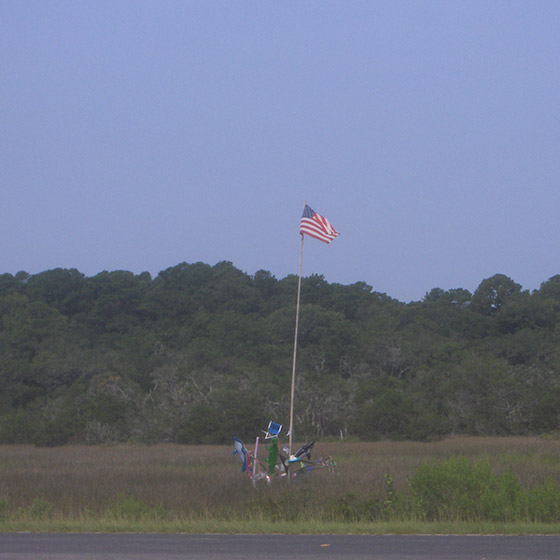
Apparently no one knows who goes out there to decorate the tree, but it has been a tradition that has gone on for years. I had tried a similar art piece in my room, gathering trash and clothes into a mound on my floor, yet somehow it was much less interesting and revered.
As our week was winding down, we ventured out to go shelling. Yes, that’s right - we brought out our tupperware and prepared to pick up shells and take them back to Ohio. Nothing is more exciting than showing off to other midwesterners the foreign lands you have visited and what strange rocks they grow there. Collecting shells was always a favorite beach activity for me because it required minimal physical exertion and I got free stuff out of it.
The shell game at Edisto, though, blew me away. They had everything. The wading pools didn’t seem real. I felt like I had entered a painting. My feet dug into the wet sand, and the cool water gently pooled over my ankles. Tiny fish and other sea life swam and lived at my fingertips. After we had collected our bounty, my mom and I bought a shell book and learned about all the different kinds of shells we had collected.
I felt present my entire time at Edisto. There was so much stimulation - the air smelled fresher, the beach more wild. Dolphins swam close to the shore, eating jellyfish on our last day there/on the island. (Of course, I had been stung by one of these things and an elderly man in a straw hat offered to pour vodka on my wound. I respectfully declined). Even the food couldn’t be beat. The Seacow Eatery was my first introduction to grits and I have not been the same since. I took those wild memories back home with me, and clung on to them tightly the next time we ventured out into the minivan, stopping at yet another eighteenth century home to tour.

